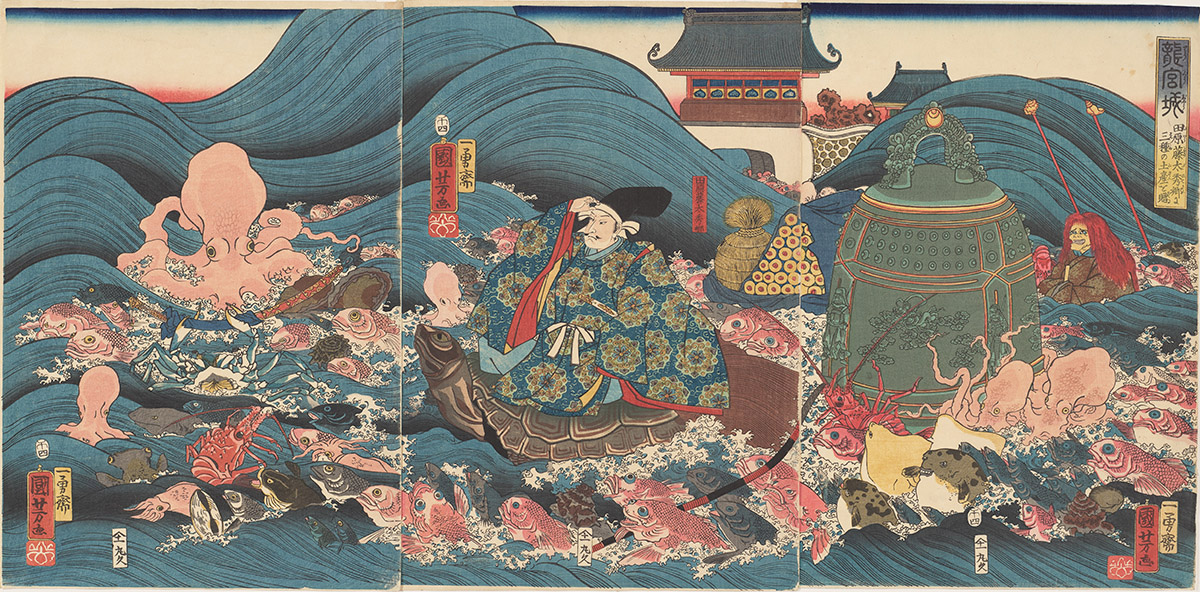Author follows Japanese bells under sea, around world in new book

LAWRENCE — Why in Japanese Buddhist tradition does the Dragon King hoard bronze temple bells in his undersea palace?
Where does the triangular relationship among dragons, bells and water come from, and how has it been portrayed and explained through the centuries?
These are the questions that drove Sherry Fowler, a professor in the Kress Foundation Department of Art History at the University of Kansas, to research and write the new book “Buddhist Bells and Dragons: Under and Over Water, In and Out of Japan” (University of Hawai‘i Press).
“Bells are significant in Buddhism but are not part of the art-historical canon,” Fowler said. “People think about paintings and sculpture and architecture, but not bells.”
And yet, as Fowler is a specialist in Japanese Buddhist art, she kept encountering them.
They were omnipresent in premodern Japan, she said.
“Most everyone could hear a bell in, say, the 17th or 18th century,” Fowler said. “There was at least one within earshot because so many temples regularly rang them. Then they became used not just as temple bells, but for timekeeping.”
Fowler, who rang a few as part of her research, said a Buddhist temple bell has a different sound than a European or American church bell, with more of a deep warbling tone.
“It functions ritually at the temple with an incredible sound that is not just for humans to hear, but which can travel into the Buddhist realms and even reach down to people who are deceased and in hell to relieve their suffering,” she said. “Thus it's called in the sutras the voice of the Buddha.”
Fowler explains in the book that the Dragon King myth is drawn from certain holy writings.
“There's a Dragon King that lives in the bottom of the sea, and he has a palace full of treasures, and among them are Buddhist sutras — written texts — and also precious things like jewels,” she said. “He also likes metal, and by extension bells. Although bells are not actually mentioned in his palace in the sutras, the notion that they are there grew out of the Dragon King’s trove of precious objects.”
Fowler’s book discusses the history of casting Japanese bronze bells, with many photographs she and others took of them in situ, as well as representations of them and their surrounding stories, including their use in rainmaking rituals that are no longer performed.
As she collected stories of bells, both actual and legendary, including Japanese waterside places named for sunken bells, she began taking an “object biography” approach to them.
“Object biography is treating whatever it is — an artwork or a piece of material culture — like a person and examining its life story,” she said. “It's doing detective work to figure out where something was at certain times in its life. But it goes beyond that, because as people interact with it, its meaning or purpose changes over time.”
Fowler tells in the book of a bell that was taken from Japan after World War II, then displayed in downtown Topeka next to the Shawnee County Courthouse for many years before being returned to its home in Shizuoka. Another section explains how a 15th-century temple bell from Okinawa came to be on the grounds of the U.S. Naval Academy. Now returned, midshipmen still ring out the winning score on a replica of it after victories in the annual Army-Navy football game.
Fowler said some rare, venerated objects like temple bells “have personalities, and people may think of them as living beings with their own agendas.”
“The idea of an object having agency is about the fact that objects can outlive generations of people. Centuries of stories about bells that have the power to speak and make demands have led to the idea that some have their own lives and own agency, which has been talked about as charisma.”
Fowler said she is pleased that the book will “bring a new awareness to bells that people hadn't thought about before.”